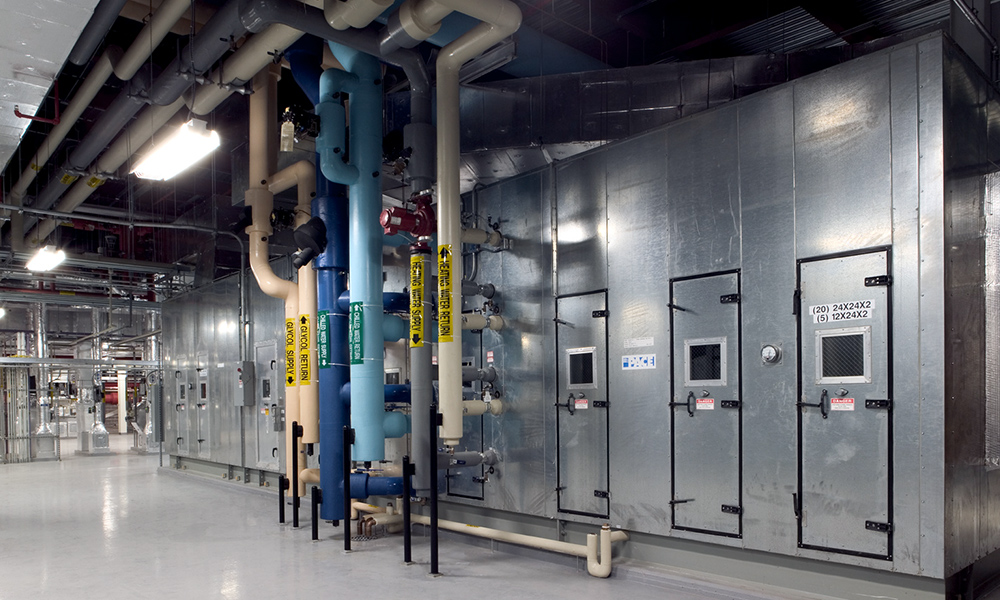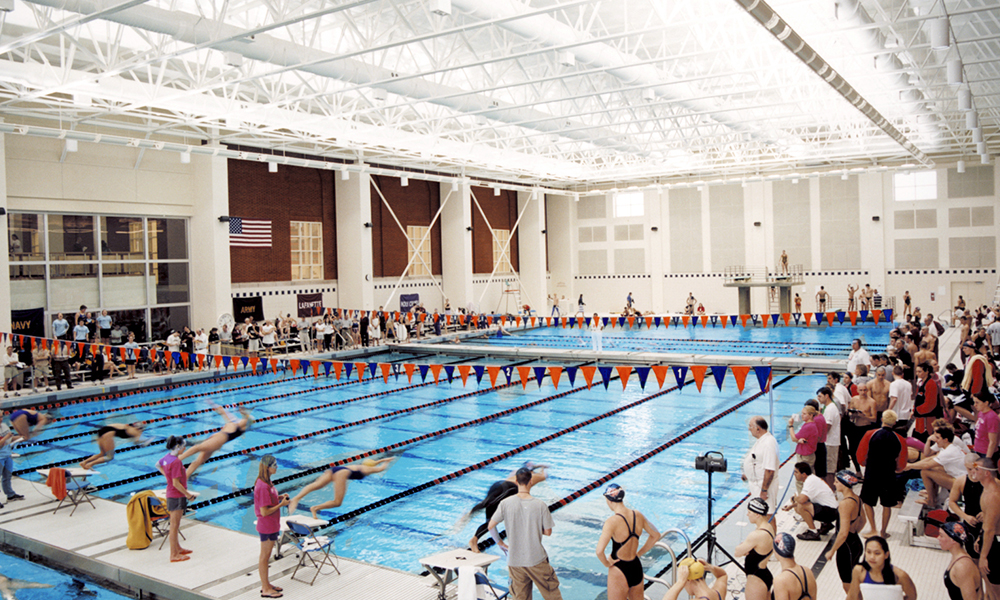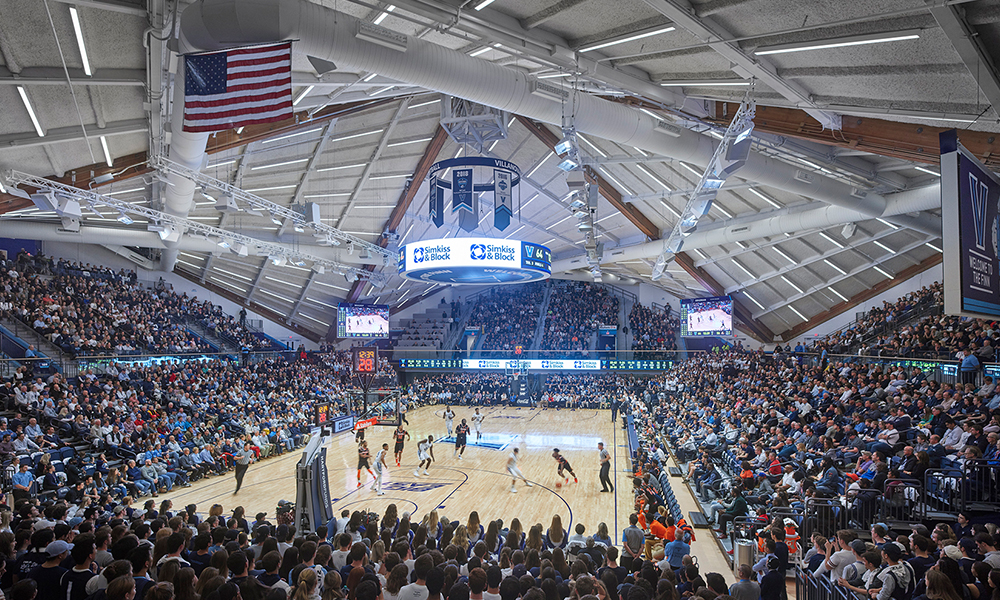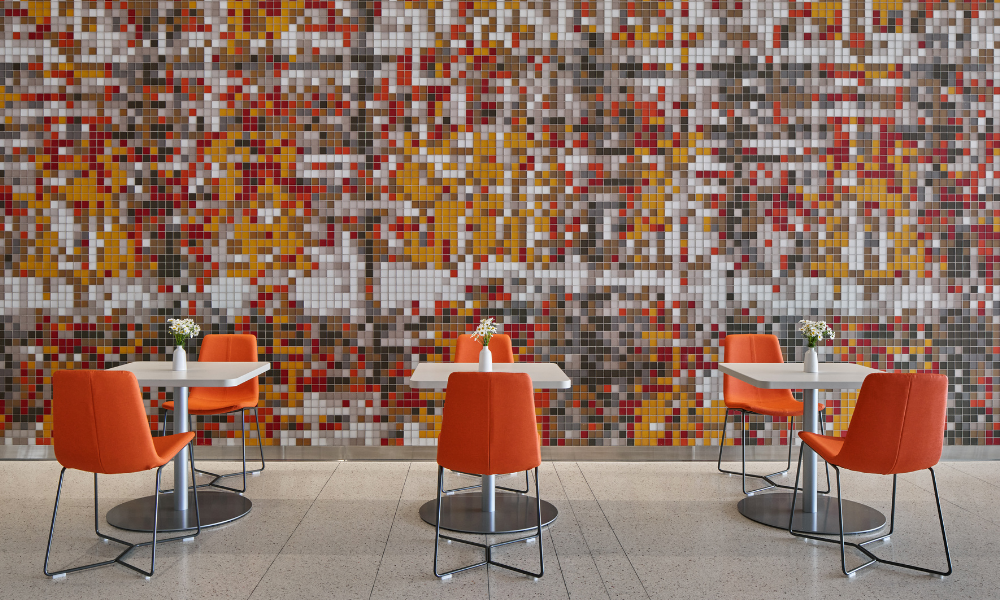
HVAC Systems; Help or Hindrance in Spreading Coronavirus?
The key difference between indoor and outdoor spaces during a pandemic is air recirculation and filtration, but is it better or worse for managing the spread between groups of people occupying a single space? We asked one of our engineers.
In previous blogs, we’ve discussed the impact that social distancing and enhanced cleaning measures would have on high-capacity spaces like sports stadiums, but we’ve since learned a little more about COVID-19 and how it’s spread. For example, the CDC has determined that the coronavirus primarily spreads through respiratory droplets in the air, or person-person contact, and less from surface-to-person contact. The difference between indoor and outdoor spaces regarding viral spread is air recirculation.
So, if the virus spreads more effectively through the air, what are the implications of that for indoor spaces? Can HVAC systems help mitigate viral spread or worsen it? We asked EwingCole’s director of energy management, Jason Fierko, PE, CEM, LEED AP – who has worked on projects like Unisphere and the LabCorp Raritan Optimization – his thoughts on the impacts of HVAC systems on coronavirus.
Q: With the primary transmission of COVID-19 occurring through the air, there has been much debate on the role of heating, ventilating, and air-conditioning (HVAC) systems in possible spread or prevention. Can you share your thoughts on this?
JF: The Centers for Disease Control (CDC) has determined that COVID-19 is transmitted through two principal means, with the primary method being respiratory droplets that are produced because of coughing, sneezing, or speaking, which can infect another person within the dispersion zone. The secondary pathway is through surface transmission, where the infected droplet is deposited on a surface and transferred to another individual’s eyes, nose, or mouth through touch. As an HVAC engineer, my work focuses on the primary method of transmission through airborne droplets, although both transmission paths are important to consider. It is essential to remember that improvements to the HVAC system are no substitute for good hand hygiene, social distancing, and personal protective equipment.
There have been conflicting reports in the media about the role of air-conditioning systems in transmission. In some instances, high-velocity air streams from the building’s HVAC system were thought to entrain the droplets and spread them further. This was most notably discussed in the Guangzhou restaurant study from China, as published by the CDC. However, later research began to focus more on poor ventilation rates and filtration as opposed to the air-conditioning system itself. I believe it is a combination of air streams, ventilation, and filtration.
Q: If it is a combination, don’t the concepts work against each other? What are the best practices for building owners and operators regarding ventilation?
JF: It’s a bit of a double-edged sword. If you reduce air velocity by reducing airflow rates to prevent further dispersion, then you are also reducing air circulation, ventilation, and filtration. There is a way to balance these concerns. First, the operation of your HVAC systems should be checked to ensure that they are operating with the appropriate amount of ventilation air. The International Mechanical Code provides requirements for how much ventilation air, or “outside” air, needs to be introduced into an HVAC system to ensure a healthy indoor environment. In some facilities, outdoor air dampers are closed to prevent issues with overheating in the summer or freezing in the winter. This creates a dangerous condition that can lead to a buildup of pollutants in the space.
Secondly, ensure that all occupied spaces are receiving ventilation through the building’s HVAC system. We’ve seen instances where occupants will block their air device to deal with drafts or hot/cold complaints. As a result, the space is under-ventilated, which can potentially extend the concentration of the virus. So, open those vents to ensure proper ventilation is maintained.
Thirdly, eliminate high-velocity jets of air by adjusting air diffusers. Many air diffusers have adjustable blow patterns that can reduce the air jet velocity by spreading the air out more evenly. If your diffusers are not adjustable, and you believe they are creating a jet pattern, they can be changed out to a more appropriate device.

Q: What else can we do to ensure we are following best practices for HVAC systems?
JF: Well, the American Society of Heating, Refrigerating, and Air-Conditioning Engineers (ASHRAE) is a great resource for guidance on this. ASHRAE’s COVID-19 resource page is one of the most comprehensive resources available. In keeping with ASHRAE’s guideline, we advise our clients to investigate increasing ventilation rates if your HVAC system can do that; an HVAC engineer can assist you in determining this. The more ventilation air provided, the more dilution achieved. If you can’t increase ventilation rates during occupied hours due to temperature restrictions or capacity constraints, then consider running your air systems at 100% outdoor air for a period during unoccupied hours to purge the building. If your HVAC systems are currently programmed to shut off at night, consider extending the run hours to continue the ventilation beyond normal occupancy. Also, if you have automatic controls in place to reduce ventilation rates based on occupancy, you may want to consider temporarily disabling those.
Operators should also be looking at the filtration levels in their systems. The current recommendation is a filter with a Minimum Efficiency Reporting Value (MERV) of 13 or higher. If your system has a lower efficiency filter, it should be evaluated to determine if higher filtration can be retrofitted into it and to ensure there are no negative impacts on airflow due to the increased air resistance.
The use of decontamination technologies can also be explored. Ultraviolet light in the 254-nm wavelength range (UVC) is typically the most effective at neutralizing viruses and bacteria, although the contact time is an important factor to consider. EwingCole has published another blog post on this topic.
These suggestions have an impact on energy use and utility bills. Owners and operators will need to balance those considerations with the benefits of improved ventilation and filtration.
Q: What about temperature and humidity? I’ve heard that the virus will be less prevalent in the summer due to hotter temperatures. Are there ideal temperature and humidity ranges we should be maintaining inside our buildings?
JF: From a temperature standpoint, I haven’t seen much research that indicates maintaining temperatures outside of typical ranges, around 68°F to 80°F depending on clothing level, time of year, activity level, et cetera have a positive or negative impact on COVID-19. If there is a correlation, then it is most likely an extreme temperature that you wouldn’t want to maintain in your building. However, there is research to suggest that humidity plays a role. Some research shows that maintaining relative humidity between 40% and 60% improves the body’s immune response, reduces travel length of infected droplets, and may neutralize the virus more quickly. To maintain these conditions, buildings in certain parts of the United States will require active humidification. Active humidification needs to be carefully evaluated with consideration of the existing building envelope and the design of the air ducting system to ensure you aren’t creating additional issues with condensation or moisture.
Q: If higher humidity is better, does that mean I can go swimming at my local natatorium?
JF: Solely from a humidity standpoint, a natatorium is generally a more humid environment that would seem to be safer based on the previous question. However, all rules and regulations of local governments still apply, and there are always risks. The higher risk is on the pool deck, locker rooms, spectator areas, or supporting spaces around the pool where social distancing and face coverings may be compromised. The CDC has provided some information on pool safety that essentially says that a well-maintained pool, with the proper water chemistry and disinfection, will neutralize the virus in the water. In the pool, the proximity concern still exists with recreational pools or shared lane lap swimming, where individuals are near each other without proper protective equipment.

Q: What about other sporting events?
JF: Large sporting events are challenging for multiple reasons. Social distancing is difficult to enforce, and fans may be less likely to dampen their cheers with a face covering. There has also been some research showing that louder speech, similar to what one might experience in a rowdy sports crowd, can generate more droplets projected at longer distances. So, the general rule of six feet of separation may not apply in these situations; a more significant distance may be required. Furthermore, high touch surfaces in concession areas and restrooms should be continuously sanitized to prevent contact transmission. The general thought is that outdoor venues with proper social distancing and appropriate personal protection would be the less risky experience compared to indoor venues.
For indoor venues, many of the strategies that we discussed previously still apply, like increasing ventilation rates, improving filtration, and adjusting air diffusers to prevent entrainment. Indoor venues are often served by higher velocity diffusers to cover the larger areas, so this becomes an especially important consideration. For buildings that have smoke purge systems or those that can run at 100% outside air, the operations staff may consider pre or post-event air purges replacing all of the inside air.

Q: How will COVID-19 affect the design of building HVAC systems going forward?
JF: It has certainly given us a lot to think about, but these issues have been considered before. Especially in the healthcare market, the idea of pandemic design is not anything new. However, convincing a client to spend additional construction dollars to accommodate a pandemic mode is challenging to do when you’re not in the middle of a pandemic. I think the experience that owners and building operators just went through will inform design decisions going forward. Healthcare facilities, for the most part, found themselves with a lack of adequate negative pressure, exhausted rooms to accommodate the large influx of patients that they saw during the peak of the pandemic. I think it will be easier to have the conversation in the future about including pandemic provisions into our designs because the building operators will better understand the challenges associated with not having those provisions in place if, or when, the next pandemic hits. Hopefully, the COVID-19 pandemic can become a learning experience that will result in more resilient buildings.





